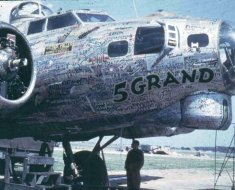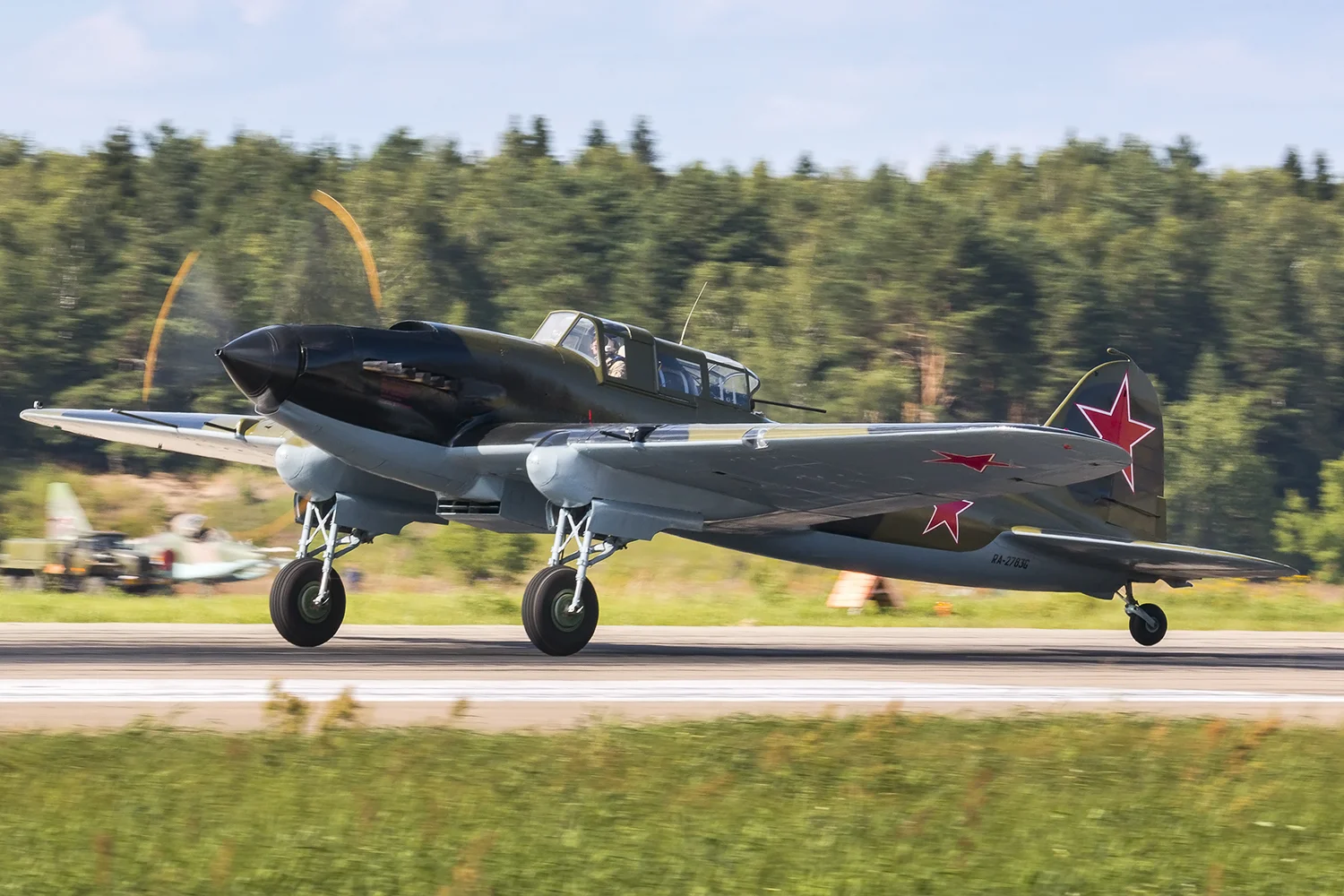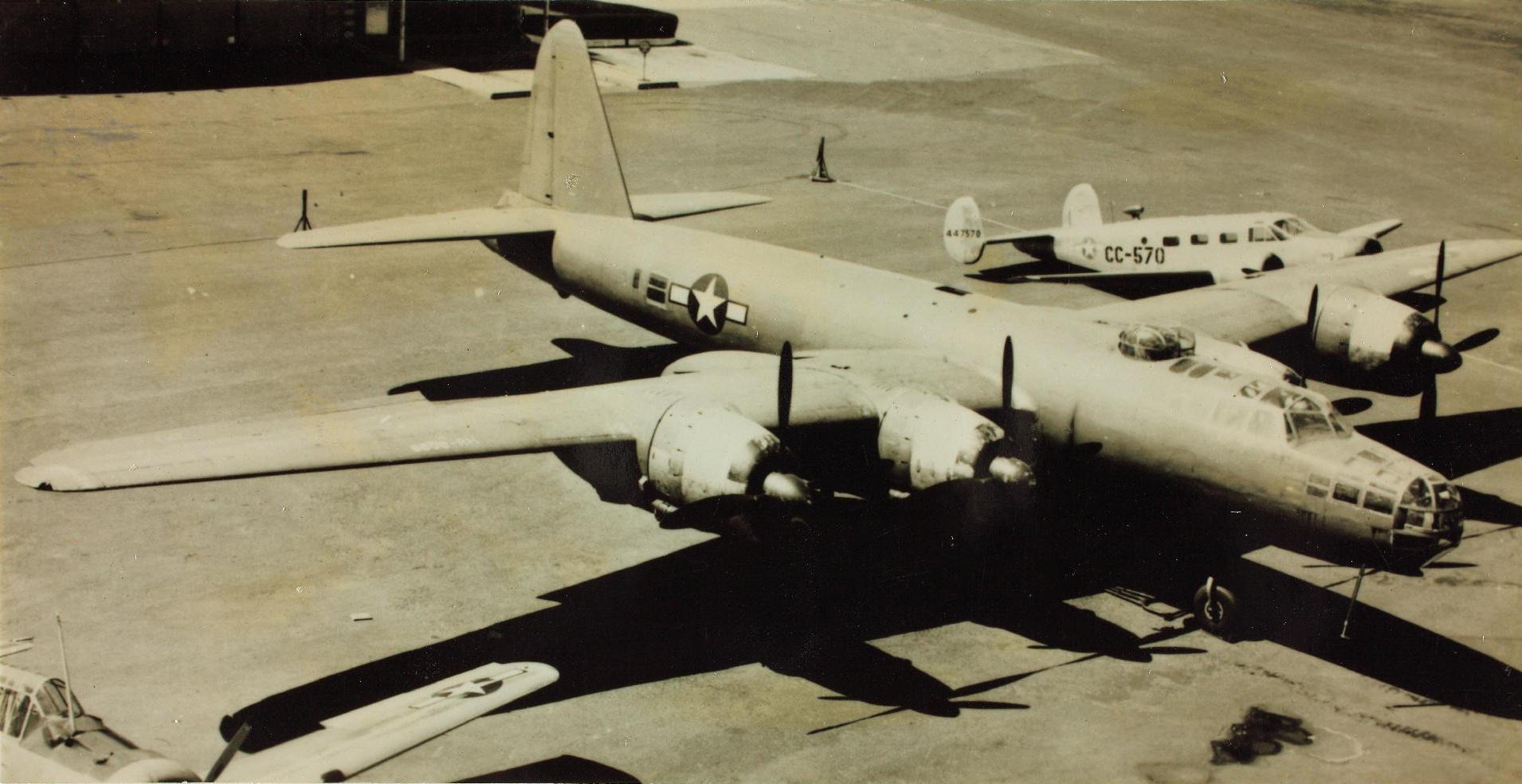On a warm, clear, summer’s day in August 1942, a dozen B-17 Flying Fortress bombers of the 97th Bomb Group carried out a precision attack on rail yards near the city of Rouen in France. This was the first time that USAAF B-17s had been used in a large-scale bombing mission in Europe and it marked the beginning of a daylight bombing campaign that would eventually cripple Nazi industry and manufacturing capacity.
During 1943, growing numbers of B-17 and B-24 aircraft pounded targets in occupied Europe until by early 1944, joint missions by the 8th and 15th Air Forces saw a 750 bomber raid in January and in February, a massive attack involving over 1,000 bombers.
These heavy bombers and their escorting fighters could fly at over 30,000 feet. Both the main German single-seat fighters then in service, the Focke-Wulf 190 and the Messerschmitt Bf-109, were capable of reaching this altitude, but that took time and neither was a particularly effective high-altitude interceptor.
Read More: Grumman XF10F-1 Jaguar – The Swing Wing Fiasco
What Germany urgently needed was a new fighter with the performance to reach high altitude quickly and the firepower and manoeuvrability to effectively take on US fighters and bombers. The outcome was the Ta 152, which some people claim was the best German fighter of World War Two. Is that true? Let’s take a look…
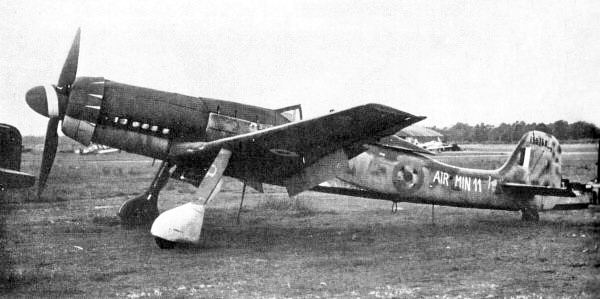
Contents
Origin
As early as May 1942, the Reichsluftfahrtministerium (RLM – German Air Ministry) issued a specification for a new Höhenjäger (high-altitude fighter). Later the same year, this was revised to become a requirement for an Extremer Höhenjäger (extreme high-altitude fighter), capable of performing effectively at up to 40,000 feet. This followed intelligence reports that had identified the development of a new American bomber, the B-29, that was thought to be capable of reaching 40,000 feet.
Two companies responded with design proposals. Messerschmitt suggested a development of the Bf 109 fitted with a more powerful supercharged engine and a pressurized cockpit.
This aircraft, given the designation Me 155B, was calculated to be capable of reaching altitudes of over 45,000 feet, but Messerschmitt were already heavily committed to the production of the existing Bf 109, refinement of the design of the Me 262 and addressing the problems in the Me 210 heavy fighter.

As a result, responsibility for this fighter was transferred to Blohm & Voss where it became the Bv 155. However, protracted design issues meant that only two prototypes were completed before the war ended and the Bv 155 never entered service. For the same reasons, a proposed high-altitude version of the Bf 109, the Bf 109H, was not ordered into production.
That left just the proposal from Focke-Wulf for a high-altitude development of the existing Fw 190 fighter. Structurally, this was a relatively simple upgrade, with a lengthened fuselage and wings that were simply enlarged from those fitted to the Fw 190.
This looked more promising, and Focke-Wulf Chief Designer Kurt Tank was given the task of producing the new aircraft. Instead of the usual “Fw” designation given to previous Focke-Wulf designs, from early 1944, RLM required that aircraft designations reflected the name of the designer responsible rather than the company, so the new aircraft was given the designation Ta 152.
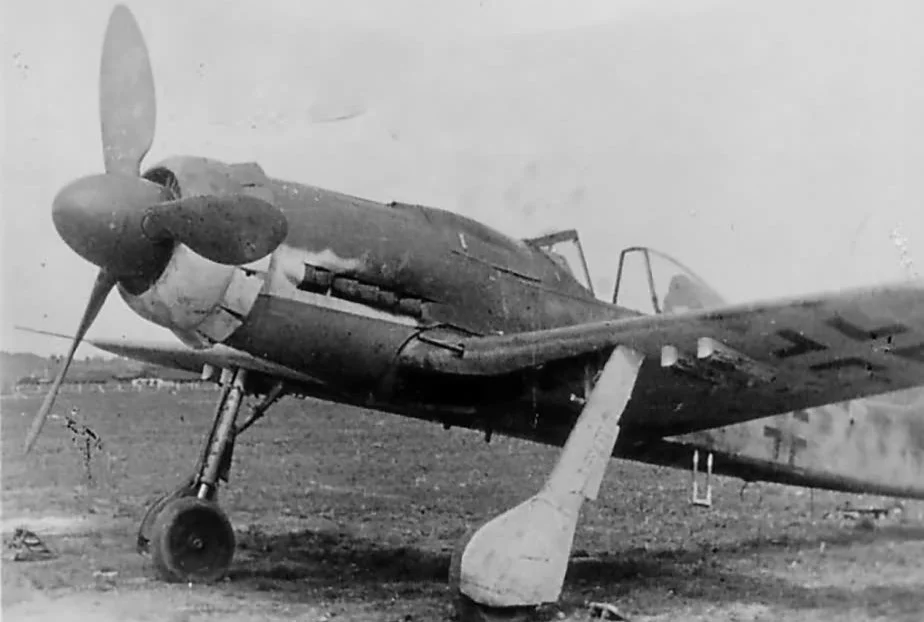
The Ta 152
The engine selected for the new aircraft was a development of the same Jumo 213 used in the Fw 190D. The new version of this liquid-cooled, V-12 engine, the 213E, was fitted with a two-stage mechanical supercharger and with both a methanol-water (MW) injection system and a GM-1 nitrous oxide system that could provide a short boost in power from around 1,700 hp to over 2,000 hp.
Read More: Me 264 Amerika Bomber – The Transatlanic Warbird
Initially, there were to have been three variants of the new aircraft: the Ta 152C, a conventional fighter/ground attack aircraft, the Ta 152H, a dedicated high-altitude interceptor and the Ta 152E, a high-altitude photo reconnaissance version of the Ta 152H. However, shortages of resources and a pressing need for the high-altitude version meant that only the Ta 152H entered production.
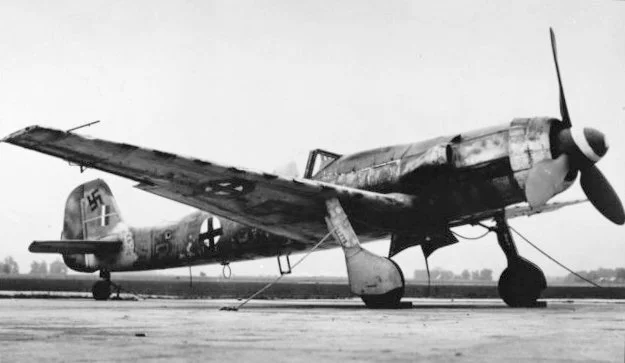
The Ta 152H was provided with a wing of (14.44 m (48 ft 6 in)) span. In comparison, the Fw 190D had a wing of just 10.5 m (34 ft 6 in). This longer wing gave greatly improved performance at high altitudes, though it limited this aircraft’s performance at lower altitudes. This wasn’t felt to be a problem as existing Bf 109 and Fw 190 fighters were capable of fighting effectively at lower altitudes.
Armament on the Ta 152H was a single 30mm MK 108 cannon firing through the propeller hub and a pair of 20mm MG 151 cannons mounted in the wing roots and synchronised to fire through the propellor arc. Early testing showed that the new aircraft had very impressive performance potential at high altitudes.
Generally, the MW injection was used below 10,000 feet while the nitrous oxide system was used at higher altitudes, though both could be used simultaneously. With both boost systems engaged, the Ta 152H was found to be capable of reaching a top speed of 470mph at 44,000 feet, making it one of the fastest piston-engine fighters of World War Two and considerably faster at high altitude than USAAF P-51 Mustang P-47 Thunderbolt escort fighters.
On one test flight, Kurt Tank was flying an unarmed Ta 152H when he encountered a flight of P-51 Mustangs. On landing, he described how he had been able to engage the MW boost to leave the American fighters far behind.

The first Ta 152H was produced by modifying an Fw 190D in the autumn of 1944, but test flights revealed a number of problems, mainly related to the haste with which this aircraft was produced. Superchargers were unreliable, the pressurised cockpit leaked, the undercarriage sometimes failed to retract completely and engines overheated.
Test flying was also constrained by fuel shortages caused by the very bombing attacks that the Ta 152 was designed to oppose. When the Ta 152 was ordered into production in November 1944, only around 30 hours of tests flights had been completed and several prototypes had been lost due to crashes and mechanical failures.
In Service
Around 20 pre-production Ta 152H-0s were delivered to Erprobungskommando (Test Command) from November 1944 and the first production version, the Ta 152H-1, was delivered to a staffel of Jagdgeschwader 301 in January 1945. This became the only Luftwaffe unit to use the Ta 152H operationally, though it never had more than 15 of these aircraft available at any one time.
Read More: McDonnell XF-88 Voodoo – Piston and Jet Power?
The first attempt to use the Ta 152H against USAAF bombers took place in early March 1945 when 12 of the new aircraft were scrambled to intercept a large formation of American bombers.

They were unable to make contact because they were attacked en route by several flights of Bf 109s who mistook the unfamiliar aircraft for a new Allied type! None of the Ta 152s was damaged, but they failed to intercept the US bombers.
Records are confused, but it seems that the first kill recorded by the Ta 152H took place in mid-April and ironically, it involved low level combat. Three Ta 152s attacked a pair of RAF Tempests strafing ground targets near Ludwigslust. One of the Tempests was shot down, but one of the Ta 152s was lost when it crashed before combat began.
In total, it is believed that Ta 152s may have destroyed up to seven Allied aircraft while four of this type were lost during combat operations. As far as is known, no Ta 152H ever destroyed an American bomber at high altitude.
Sources differ, but somewhere between 40 and 60 Ta 152 were produced in total. Shortages of materials and skilled workers meant that production ended in February 1945 and by the end of April, only two Ta 152s remained in service with the Luftwaffe.
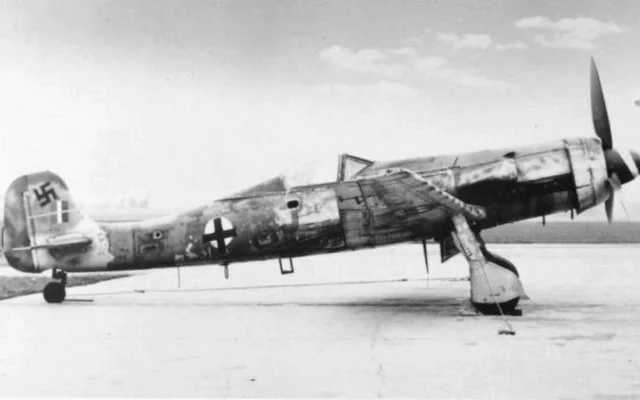
Conclusion
Was this the nest German fighter of World War Two? Amongst those of us fortunate enough never to have never experienced it at first hand, there is a temptation to view war as a kind of Top Trumps game, comparing the specifications of particular aircraft, tanks or ships to decide which is “best.”
On this basis, the Ta 152 scores highly due to its impressive top speed, high altitude capability and firepower. In reality, war is rarely as simple as that. The actual effectiveness of any weapon system depends on much more than any paper specification.
The haste with which this aircraft was rushed into service meant that it still had notable issues when it entered service. Engines continued to overheat, the pressurization system was unreliable and the problems with undercarriage retraction problems were never fully solved.

When you add in a critical shortage of fuel and spares and the declining quality of German fighter pilots as training was cut back to dangerous levels, it’s unsurprising that the Ta 152 never achieved much in terms of combat kills.
Read More: MiG-29 Fulcrum – Export Powerhouse
Set against that, it was never available in large numbers and never used for the purpose for which it had been designed, attacking en-masse against large formations of high-flying US bombers, so it is difficult to assess how good it might have been in that role.
Given the time and resources for further development, perhaps this might have become an effective high-altitude interceptor. Perhaps it might even have become one of the best fighters of World War Two?
But time and resources were the very things that the Allied ground and bombing campaigns were intended to deny to Germany, and the lack of both meant that the Ta 152 never became more than an interesting footnote in the history of air combat in World War Two.
If you like this article, then please follow us on Facebook and Instagram.
Specifications
- Crew: 1
- Length: 10.82 m (35 ft 6 in)
- Wingspan: 14.44 m (47 ft 5 in)
- Height: 3.36 m (11 ft 0 in)
- Empty weight: 4,031 kg (8,887 lb)
- Max takeoff weight: 5,217 kg (11,502 lb)
- Powerplant: 1 × Junkers Jumo 213E or Junkers Jumo 213E-1 V-12 inverted liquid-cooled piston engine, 1,287 kW (1,726 hp) for take-off
- 1,530 kW (2,050 hp) for take-off with MW-50 water/methanol injection940 kW (1,260 hp) at 10,700 m (35,100 ft) with GM-1Nitrous Oxide injection
- Maximum speed: 580 km/h (360 mph, 310 kn) at sea level with MW-50 boost
- 759 km/h (472 mph; 410 kn) at 12,500 m (41,000 ft) with GM-1 boost
- Range: 2,000 km (1,200 mi, 1,100 nmi)
- Service ceiling: 15,100 m (49,500 ft) with GM-1 boost
- Rate of climb: 20 m/s (3,900 ft/min) at maximum weight of 5,217 kg (11,502 lb)
- 25.4 m/s (83 ft/s) at 4,727 kg (10,421 lb)



